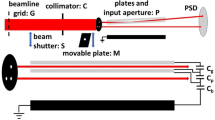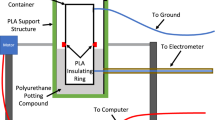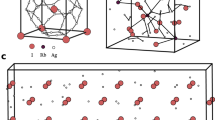Abstract
ARNOT has described experiments1 which he has interpreted as showing that a positive ion striking a surface can be converted into a negative ion by capture of two electrons. The negative ions drawn off may have energies in excess of that imparted to them in the accelerating electric fields. Some of this work was not in agreement with other results which one of us had obtained for negative ions, and we have therefore repeated and extended it.
This is a preview of subscription content, access via your institution
Access options
Subscribe to this journal
Receive 51 print issues and online access
$199.00 per year
only $3.90 per issue
Buy this article
- Purchase on Springer Link
- Instant access to full article PDF
Prices may be subject to local taxes which are calculated during checkout
Similar content being viewed by others
References
Arnot and Milligan, Proc. Roy. Soc., A, 156, 538 (1936). Arnot, Proc. Roy. Soc., A, 158, 137 (1937). Arnot, Proc. Roy. Soc., A, 158, 157 (1937).
Stille, Ann. Phys., 17, 635 (1933).
Thompson, J. S., Phys. Rev., 38, 1389 L. (1931).
Author information
Authors and Affiliations
Rights and permissions
About this article
Cite this article
SLOANE, R., PRESS, R. Formation of Negative Ions at Surfaces. Nature 141, 872–873 (1938). https://doi.org/10.1038/141872b0
Issue Date:
DOI: https://doi.org/10.1038/141872b0
This article is cited by
-
Surface Formation of Lithium Negative Ions
Nature (1947)
-
Formation of Negative Ions by Negative-Ion Bombardment of Surfaces: A New Process
Nature (1939)
-
Formation of Negative Ions at Surfaces
Nature (1938)
Comments
By submitting a comment you agree to abide by our Terms and Community Guidelines. If you find something abusive or that does not comply with our terms or guidelines please flag it as inappropriate.



